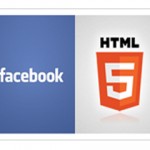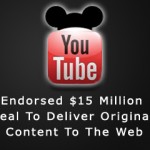 Mountain View, California — After months of waiting, Google Inc.’s promising social media network on Monday, finally began to unveil the master plan behind its +1 scheme. The search engine company extended its Google+ Pages to help businesses and brands create a presence on the social network platform for connecting with their users locally and worldwide.
Mountain View, California — After months of waiting, Google Inc.’s promising social media network on Monday, finally began to unveil the master plan behind its +1 scheme. The search engine company extended its Google+ Pages to help businesses and brands create a presence on the social network platform for connecting with their users locally and worldwide.
Now brands and businesses have a way to market themselves to the Google+ crowd, as the long-anticipated answer for brands desiring to get into the social fold through Google.
The move is Google’s response to its rival social media giants’ Facebook Pages, which similarly allows businesses and brands promote conversations related to products and services, but Google+ is something that users have been wishing — nearly begging for, since the company has launched.
{japopup type=”iframe” content=”images/stories/demo/2011/nov/ finall.png” width=”1024″ height=”600″} {/japopup}
{/japopup}
“For you and me, this indicates that we can now hang out live with the local bike shop, or discuss our wardrobe with a favorite clothing line, or follow a band on tour,” explained Vic Gundotra, SVP of social, wrote in a blog post. “Google+ Pages imbues life to everything we find in the real world. And by adding them to circles, we can create lasting bonds with the pages (and people) that matter most.”
Gundotra added that the update also represents that brands and companies will be able to garner +1s for their businesses to their circles, recommend them with a +1 as well as connect with business team members personally in Hang Outs. Users will also now be able to loop Pages into their Circles as well.
With the unveiling of Pages, Christian Oestlein, a Google product manager, said in a Google+ post that he hopes the service will “revolutionize the way we think about marketing.”
Interestingly, Google Pages are formulated to accommodate five basic types of entity: Local Business or Place; Product or Brand; Corporation, Institution, or Organization; Arts, Entertainment, or Sports; and Other.

At least initially, the new Google+ pages for businesses look almost exactly equivalent to personal pages, with the addition of several index images at the top of the page.
There are a couple of things to be aware of when you launch a Page. Pages differ in several important ways. They are designed to provide Page owners with data about visitor demographics, posts that have been shared, use of Google’s +1 button when associated with the Page, and related analytics information.
Specifically, they differ as follows: First of all, everything on a Page is naturally becomes public, unlike personal profiles where it is confined to your Circles by default. Secondly, users do not need to worry about Google+ spam (at least for the time being), because Pages can not just troll the social media network adding people to their Circles left and right.
Google also added Google+ pages to search results, as well as a “Direct Connect” element that will allow users to search for Google+ pages via a “+” modifier to a search query. For instance, searching for “+Dell,” takes the user directly to Dell’s Google+ page.
Dell, however, seems to be employing the new medium to competitively engage with customers, soliciting feedback on a variety of topics.
“Dell’s Google+ Page is a centralized platform to avail updates from all of Dell from across our wide range of businesses,” Lionel Menchaca, Dell’s chief blogger, wrote in a blog post.
Google+ engineers seems to be gradually rolling out the new Pages globally. However, some organizations, like the band Coldplay, already have signed up, but not everyone can. In addition, some users clicking on the link to create a business page receive the prompt, “Google+ Pages is not ready for everyone,” and asks users to “check back soon.” Gundotra said in his blog post that if the service is not immediately available, it should be shortly.
Google executives mentioned that the new brands addition was long awaited.
“As most of you know, we ‘kicked out the brands’ in the early going on Google+… Not because we do not love them (we do!) but because we wanted to create the right experience for users, as well as the brands themselves,” Bradley Horowitz, vice president of product for Google+, said in a post on Google+.
“Today we have unleashed that experience,” Horowitz added. “This is a very big day for us… thank you to the brands and businesses that have waited patiently as we perfected this… and huge congrats to the multiple teams that made this happen.”
Currently, a group of businesses, including Macy’s, Pepsi, Burberry, Rovio’s Angry Birds, Toyota, and Zen Bikes are all companies and brands that have signed on. Though Toyota, among others, still has yet to take advantage of the new format, and has an essentially blank page, as does Pepsi.
{iframe width=”640″ height=”360″ align=”top”}http://www.youtube.com/embed/8Ccf5GxM7vg{/iframe}


